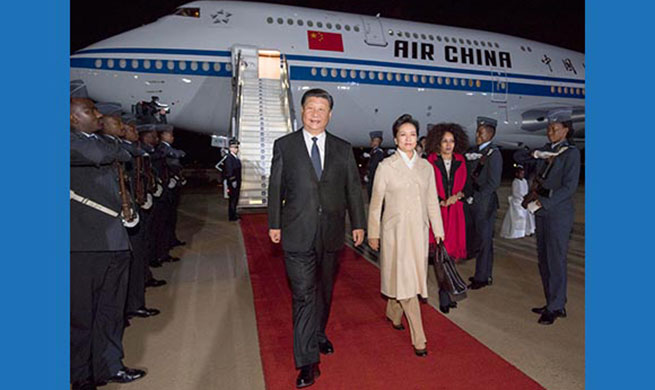HOUSTON, July 24 (Xinhua) -- Researchers from U.S. Rice University and Baylor College of Medicine, both in Houston, Texas, believe they have found a new way to target flu virus, according to a news release by Rice University on Tuesday.
There's a hitch in the swing of a protein that delivers the flu virus, and the Rice-Baylor team led by biophysicist José Onuchic and biochemists Jianpeng Ma and Qinghua Wang believe this mechanism may be a useful target to stop the virus from infecting cells and have delved further into a glycoprotein complex it began to define in a 2014 paper.
That protein, hemagglutinin, sits on the surface of flu viruses and helps them attach to and transport through the protective membranes of target cells.
"This protein starts in a folded state and goes through a global transformation, refolding in a completely different state," said Onuchic, co-director of Rice's Center for Theoretical Biological Physics (CTBP).
According to Onuchic, there's a small part in the center that evolution has conserved.
That single conserved amino acid residue is the hitch that makes the protein pause in the process of refolding. It allows a fusion peptide buried inside to bind to the target cell and begin infecting it. Without the pause, the refolding would be too quick for binding to take place.
Lead author and Rice postdoctoral researcher Xingcheng Lin modeled that part of the protein, the B-loop of the HA2 domain. HA2 sits beneath another domain, a cap known as HA1 that mutates to escape past defenses. Lin explained that HA1 is a common target for flu medications because the exposed cap domain is more accessible than the protected HA2 domain.
The problem is that HA1 mutates constantly to resist drugs, he said. That influences how effective flu vaccines are every year. Lin and Onuchic said HA2 presents a better target for drugs because the mechanism is highly conserved by evolution.
"If a drug targets HA2, the domain cannot escape by making mutations because the mutations themselves would make it nonfunctional," Lin said. "That kind of drug could become a universal vaccine."
The research was supported by the National Science Foundation (NSF), the Welch Foundation and the National Institutes of Health.
















